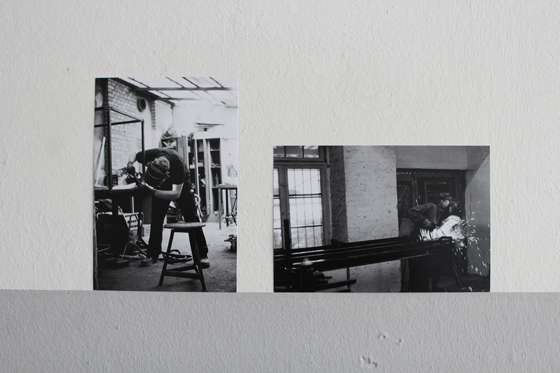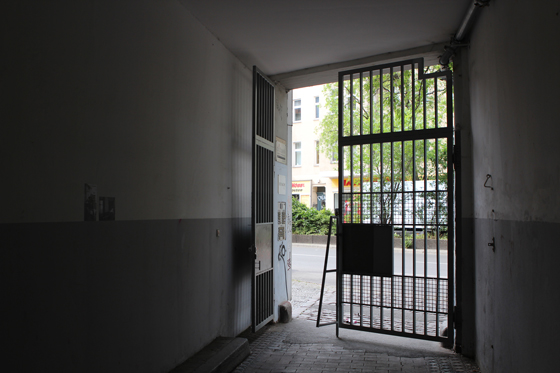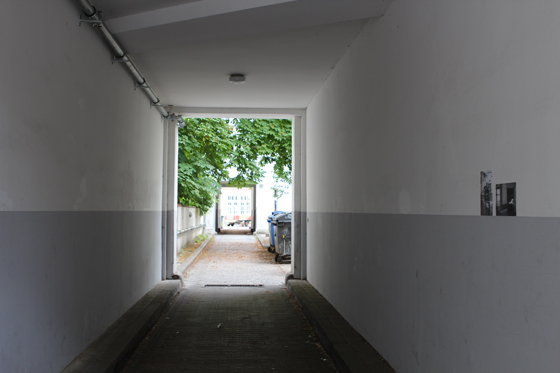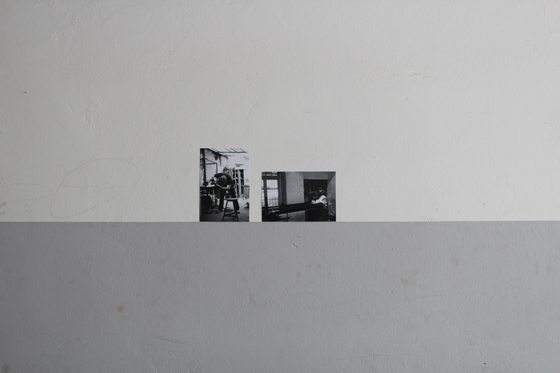SENEGAMBIA BLEIBT
Video, one channel, Full HD, 2019.
Video, one channel, Full HD, 2019.
SENEGAMBIA BLEIBT is a collaborative video focused on the connections between Brazilian and West African cultures in Europe. Senegambia is a West African restaurant located on Reichenberger Straße (the same street as Gallery Mario Kreuzberg), where a lot of different African communities meet to eat food from their home countries. Pa Modou Jah, the owner of the restaurant, talks about his migration history to Germany which happened over thirty years ago, the gentrification affecting Kreuzberg today, and the role of the manioc in connecting South America, Africa and Europe. Departing from the manioc dishes, the video also connects the gallery space to the local neighbourhood.







UNKNOWN UNIVERSITY
2017, Hérens Valley and Standard/Deluxe Gallery, Lausanne, Switzerland. Artistic residency and durational collective performance.
2017, Hérens Valley and Standard/Deluxe Gallery, Lausanne, Switzerland. Artistic residency and durational collective performance.
After 10 days of retreat in the Hérens Valley, Switzerland, the founders of the Unknown University occupied Standard/Deluxe the 25th and 26th of August 2017. The space was open from 1 to 10 pm without interruption. The program, unknown until it happened, was based on the following values:
- anonymity is a powerful tool
- the transformation of the individual body affects the social body
- studying is more important than producing
- intellectual property is a fiction
- to create is to study, to study is to play
- there are no divisions between teachers and students, these roles are always interchangeable
- vulnerability is a rewarding place
The Unknown University is a multilingual and interdisciplinary project of study, creation and individual and collective transformation. It takes its name from the idea of the Chilean poet Roberto Bolaño who affirmed that there existed in the formation of each writer an "unknown university guiding his steps and which, obviously, has no fixed place, it is a mobile university that is common to all ". The Universidad is a homeless research center that happens every time members summon it.
Curator: Valentina D'Avenia
Participants: Tom Nóbrega, João Meirelles, Jonas Van, Germano Dushá, Barbara Marcel, Mazyar Zarnadar, Léa Katharina Meier




THE HAIRY GODDESS MISSTORY
2017, Berlin. Collective project and performance by and with Érica Zíngano, Marion Breton, Barbara Marcel and Tom Nóbrega. Co-produced by and performed at Literaturhaus Lettrétage Berlin as a part of CON_TEXT event series, funded by the Senate Department for Culture and Europe.
2017, Berlin. Collective project and performance by and with Érica Zíngano, Marion Breton, Barbara Marcel and Tom Nóbrega. Co-produced by and performed at Literaturhaus Lettrétage Berlin as a part of CON_TEXT event series, funded by the Senate Department for Culture and Europe.
»The day before yesterday. We mourn. The XXI century died, but we keep preparing its funeral. Look at your hands, both hands. On the one hand you have the story of apocalypse. As any story about time, of course it will end in a big climax, bing bang, bow wow wow. Of course the main character of this adventure is God, standing on the shoulders of their army of encrypted angels. On the other hand, there is the flipped version of this story: this one we could call revolution. A revolution reincarnated as a hairy goddess. S/he’s everywhere, everywhere feels as near as nowhere. Immanent in our messy backpacks, roaring in our inner jungles. This version changes the speed of the trains and cars and airplanes through which we perceive the world. Choose a word and hit the road. Mystery. Chaos. Smoke. Animals. Magic. Light another match. This is an ongoing story. It comes in a box delivered by DHL. The sun is the third sign on the road. A long road. On the tip of your fingers.«
The project is a collective study around the revolutionary potential of death experience and the idea of overcoming it. Loosely based on Vladimir Mayakovsky’s ‘Mystery-Bouffe‘ and the futuristic opera ‘Victory over the Sun‘, the performance is a free adaptation of both from the queer and migrant perspectives, with cross-references to the Russian Cosmism, Brazilian tropicalism, radical feminism and queer theory.
Music and sound by Katrina Burch aka Yoneda Lemma.
With support by Sam Langer, Bruno Siegrist and Lotto Thiessen. Technical support: Jure Kapun.
Documentation Photos by Ferid A. Barak/Lettrétage.
Video Documentation:

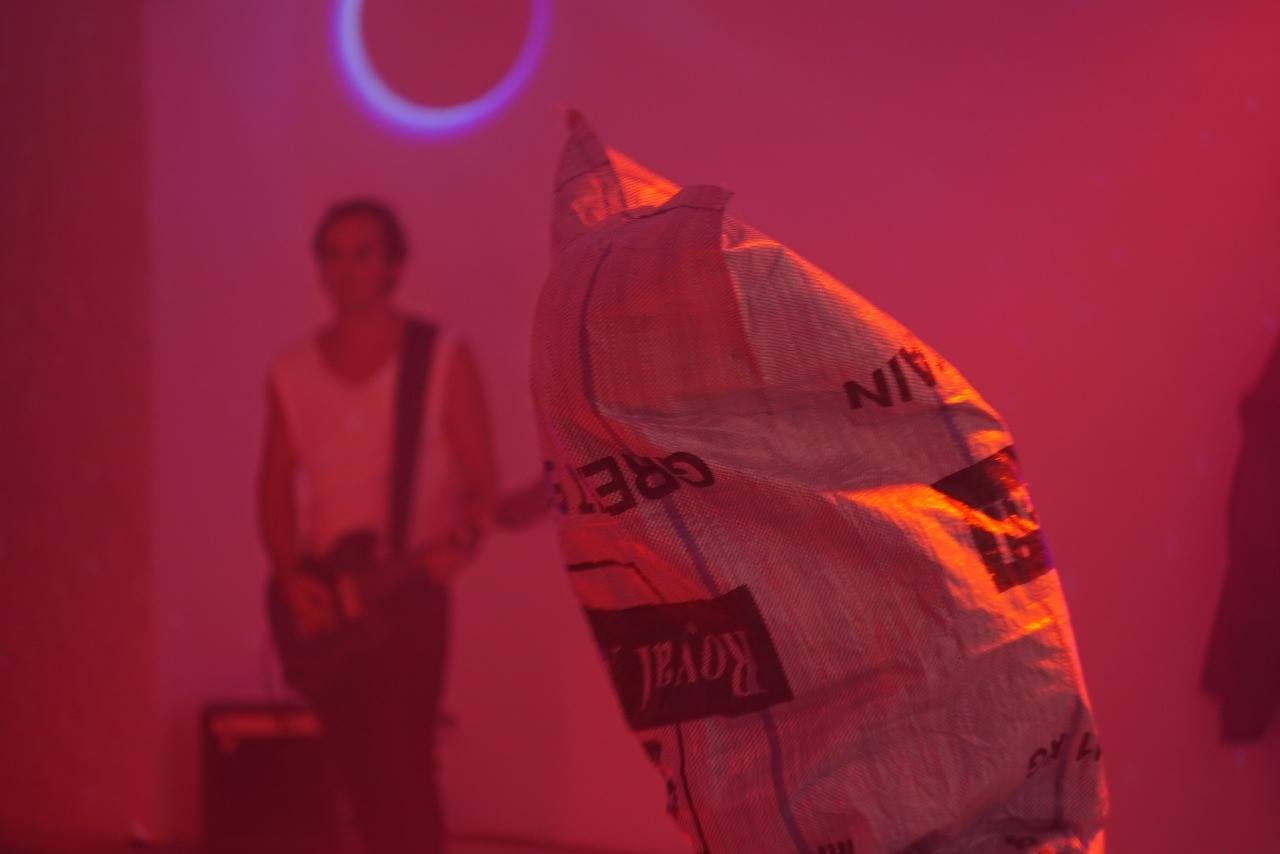

MYSTERY-BOUFFE ADAPTATION
2017, Montpon France. Collective project and performance by and with Érica Zíngano, Marion Breton, Barbara Marcel and Tom Nóbrega as part of the festival TROIS JOURS AU TUQUET during the summer of 2017. Based on Vladimir Maiakovski´s play „Mystery-Bouffe: A Heroic, Epic and Satiric Representation of our Era” (1918-21) and its adaptation from Jerzy Grotowski (1960).
2017, Montpon France. Collective project and performance by and with Érica Zíngano, Marion Breton, Barbara Marcel and Tom Nóbrega as part of the festival TROIS JOURS AU TUQUET during the summer of 2017. Based on Vladimir Maiakovski´s play „Mystery-Bouffe: A Heroic, Epic and Satiric Representation of our Era” (1918-21) and its adaptation from Jerzy Grotowski (1960).
As a socialist dramatic play written by the Russian avant-gardist artist Mayakovsky between 1918 and 1921, Mystery-Bouffe proposes in its prologue that “in the future, all persons performing, presenting, reading or publishing Mystery-Bouffe should change the content, making it contemporary, immediate, up-to-the-minute.” Such suggestion, was taken by the Polish author Grotowski, who directed an adaptation of the play, presenting it for the first time at the Theatre of 13 Rows in Opole on 31 July 1960. From the diverse artistic biographies of the four artists and their different migratory contexts in Europe, the adaptation focused on an interdisciplinary collaboration, based on performative and site-specific actions in dialogue with the bucolic landscape of southern rural France.
Documentation Photos by Marianne Wasowska.
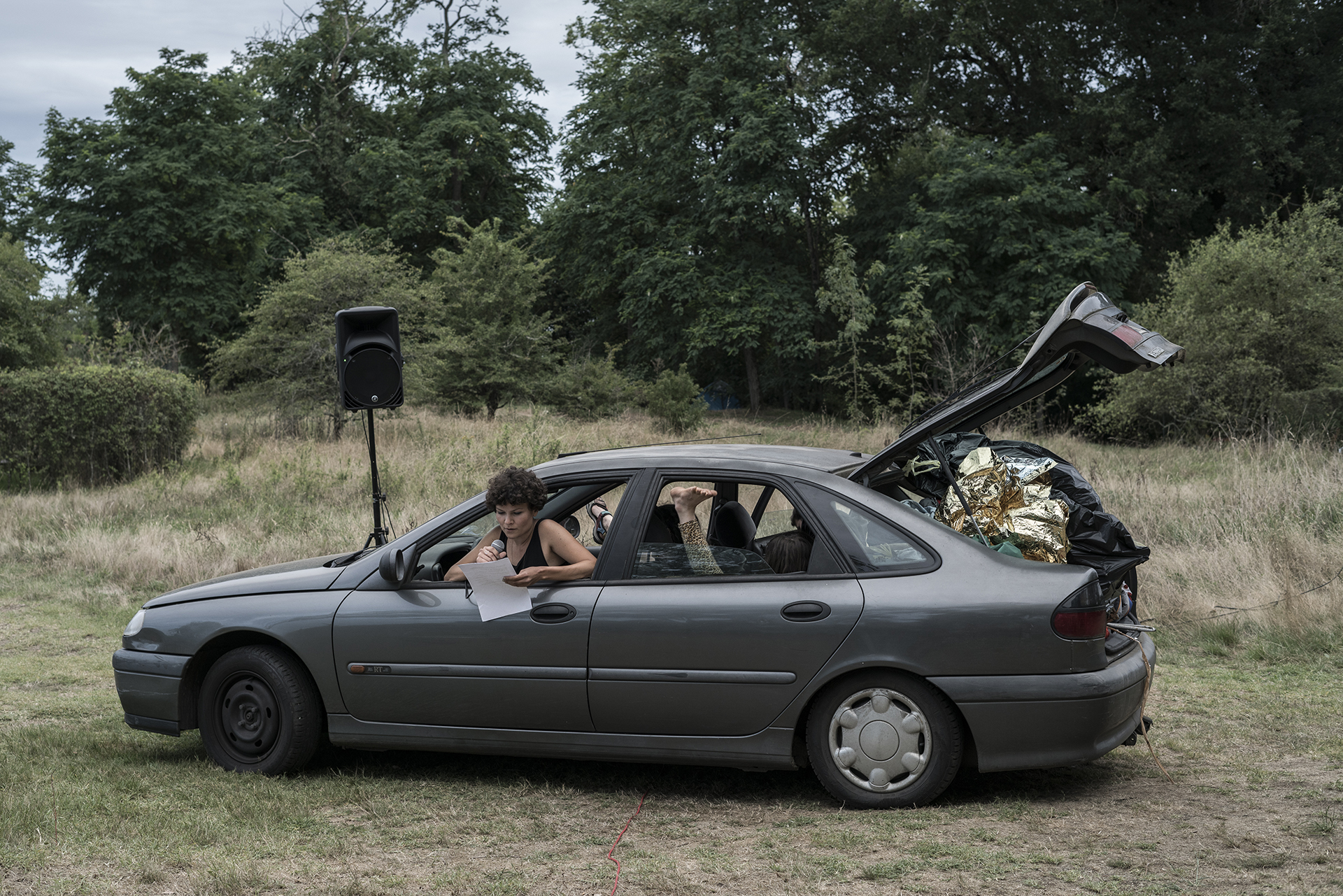
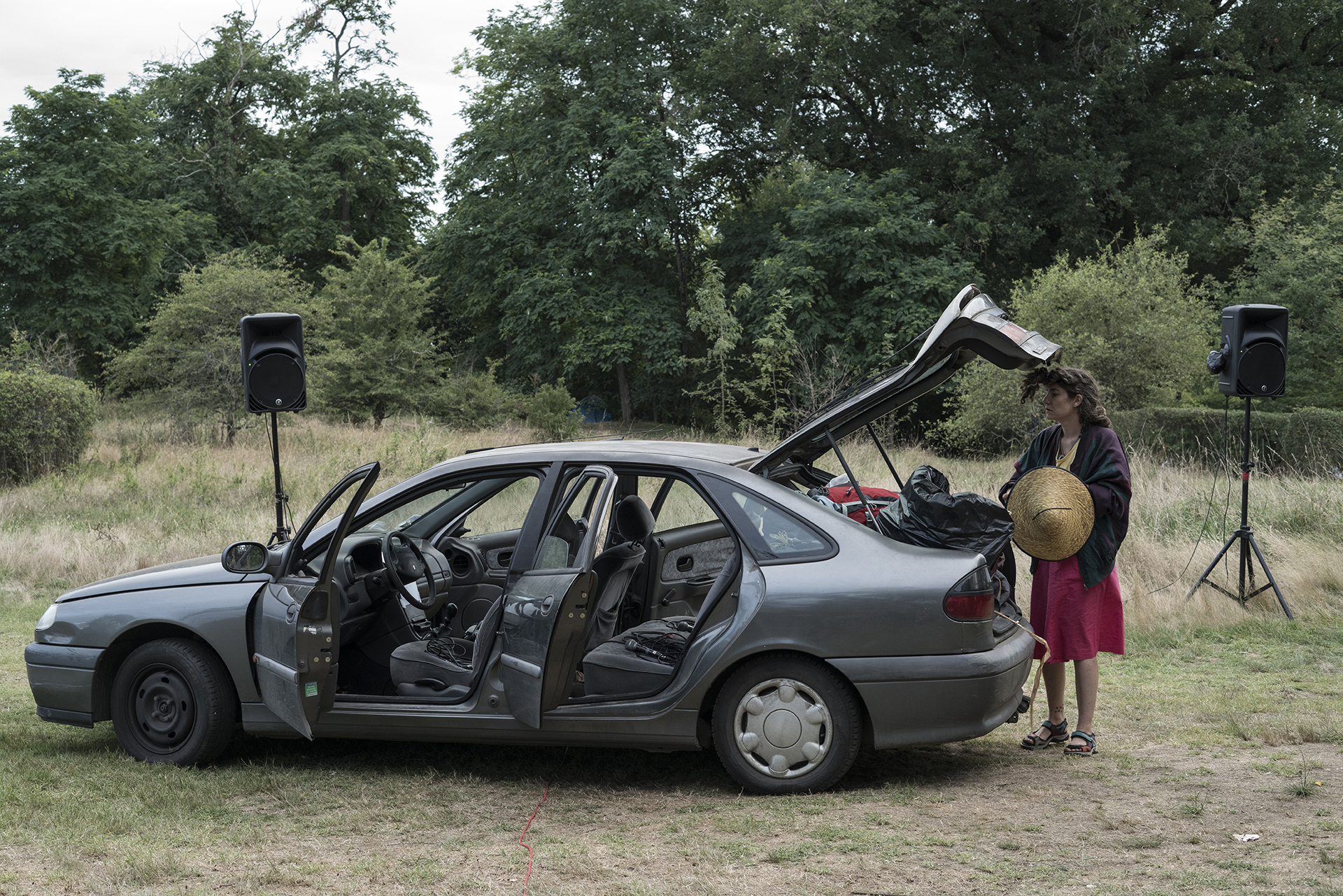
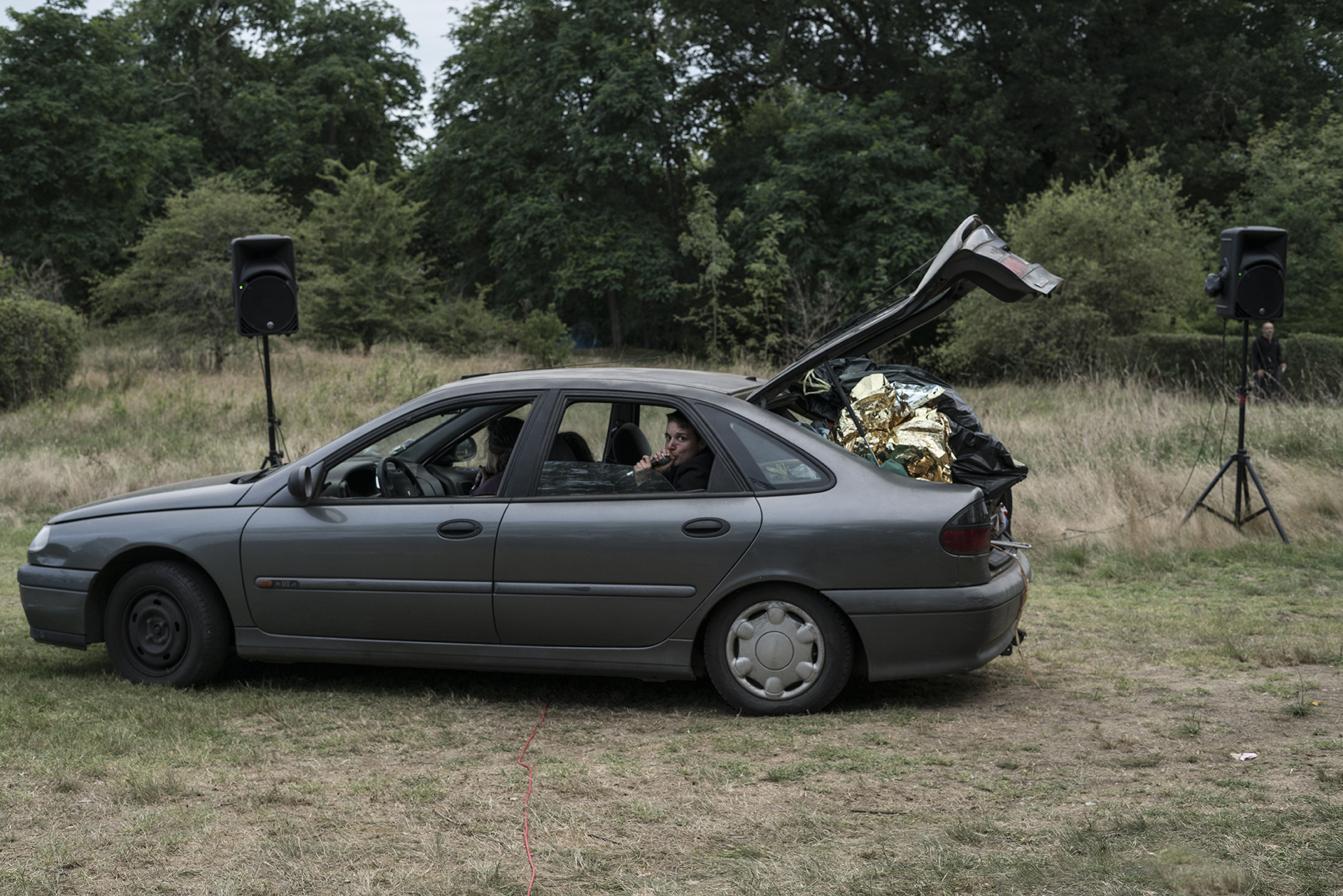



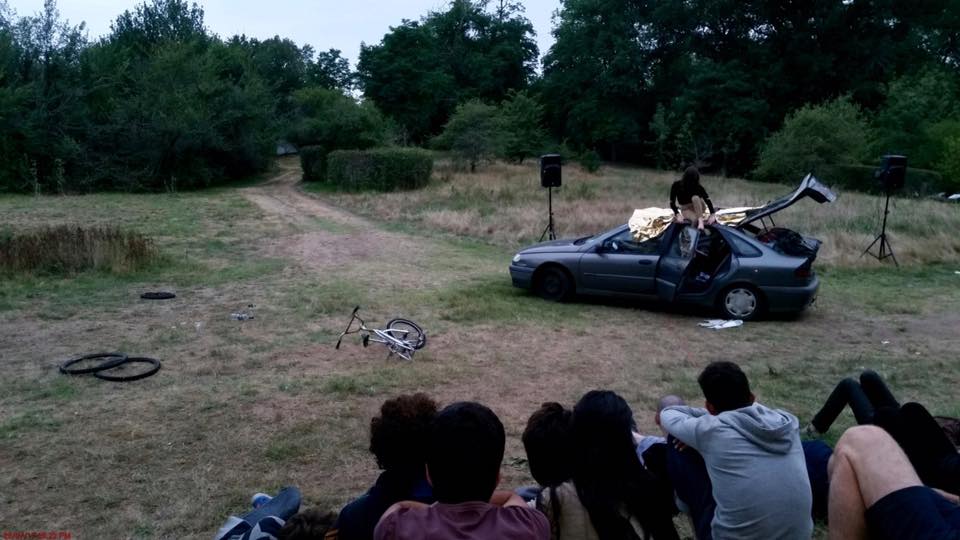
230 000 cm
2013, Neukölln, Berlin. Collaborative project between artists in the neighborhood of Neukölln, for the festival 48 Stunden Neukölln and Nacht und Nebel. B&W photographs in public space, Publication and evening workshop opened with readings. Project funded by Quartier Donaukiez of Neukölln, organized by Marta Leite, Barbara Marcel and Anais Senli in the Karl Marx Studio.
2013, Neukölln, Berlin. Collaborative project between artists in the neighborhood of Neukölln, for the festival 48 Stunden Neukölln and Nacht und Nebel. B&W photographs in public space, Publication and evening workshop opened with readings. Project funded by Quartier Donaukiez of Neukölln, organized by Marta Leite, Barbara Marcel and Anais Senli in the Karl Marx Studio.
230 000 cm corresponds to the diameter of the Quartier Donau, in the district of Neukölln in Berlin. The book resulting from this project brings together a collection of photos and stories that happen between spring and autumn 2013, within this diameter. The guiding thread of the project is the relationship between memory, subjectivity and experience of many residents of the neighborhood and its relationship with the artists who work in it. The process is divided into two stages. During the spring we invited several artists with Ateliers in the neighborhood, to take pictures of certain places that seem peculiar to them, in relation to the convivial in public space. For the "48 Hours Neukölln Festival", we printed the photos in b&w and exhibit near the places where they were originally taken. In our Atelier we distributed a map to the Festival audience, so they could see the photos on a walk around the block. In the second stage of the project, we invite artists to write narratives or free verses, that related to the images produced. The compilation of works was published with the help of Quartiermanagement, and launched into a night of readings in Karl Marx Studio during the Fall Festival, Nacht und Nebel (Night and Fog). The result is a kaleidoscopic image of DonauKiez, narrated by people of different cultures, interests and experiences in the social space of the quartier. The book reflects the diverse and complex surface of one of the most multi-cultural neighborhoods of Berlin.
